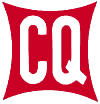A few pieces of advice for those operating in CQ WW CW this weekend.
Make sure you know who you are working. With the short exchange, it is easy for two running stations near the same frequency to get in synch. Both reply to a caller. The caller is only working one of them. Someone gets a Not-In-Log (NIL) with the +2x penalty. If something doesn’t sound right, ask for a repeat.
This is especially true if you are chasing spots. With stations close together, you may click on a spot and actually be working a station that is near the spot frequency, but not the station you think it is. We also see many cases where a spotted station leaves a frequency and is replaced by someone new. People click on the spot and log the station that was there before.
Pay attention to callsigns with lots of dots. KH6ND often becomes K5BND! S50A becomes SH0A. (Watch out for calls like BI4SSB.) With the busted call penalty, these can be expensive errors.
Please enter the correct category in your log. If you use the Cluster, CW Skimmer or RBN, you are in the Assisted category.
If you want to enter single band and also work stations on other bands, put all QSOs into one log and then mark the CATEGORY-BAND in the header. DO NOT SEND MULTIPLE ENTRIES FOR THE SAME CALLSIGN! Each log will overwrite the previous one.
Use the web page to upload your log. http://www.cqww.com/logcheck/ This page will give immediate feedback on the format of your log. Once you go through the checking, your log is NOT submitted until you enter your email address and press submit. When you receive the email confirmation OR see your log on the logs received page (http://www.cqww.com/logs_received_cw.htm) then you know your log has been received.
If you notice someone breaking the rules or that has a bad signal, make a note of the call, time, and frequency, contact us at : https://cqww.com/contact after the contest.
Be considerate and enjoy the magic of radio. Most of all – have fun!
